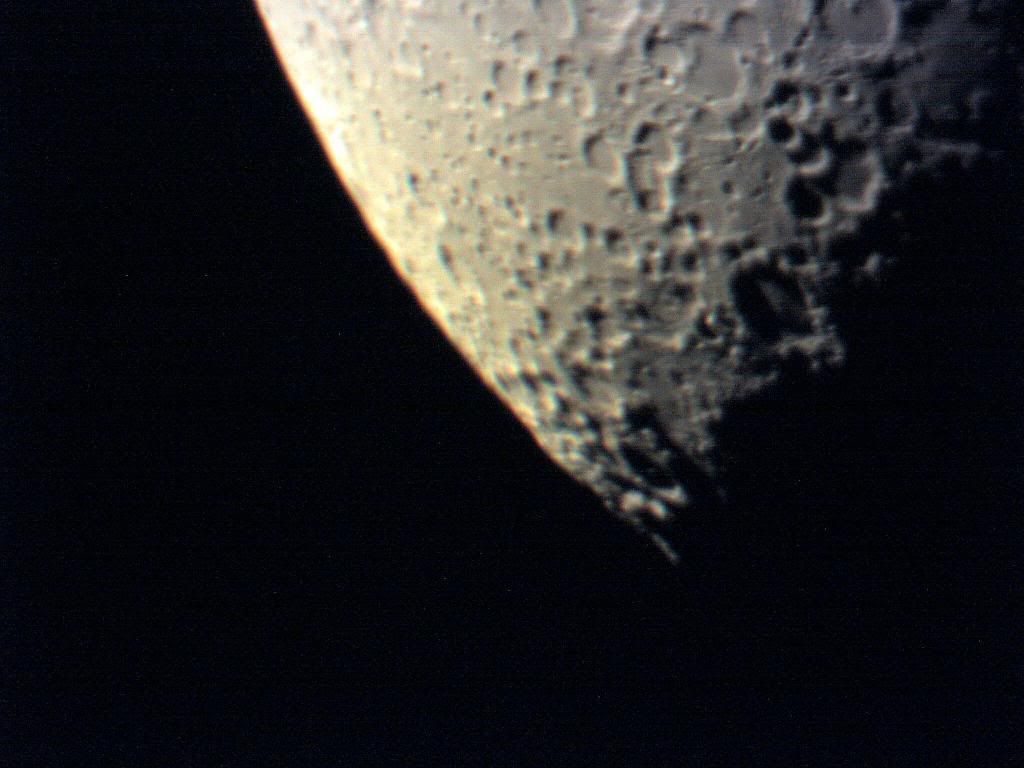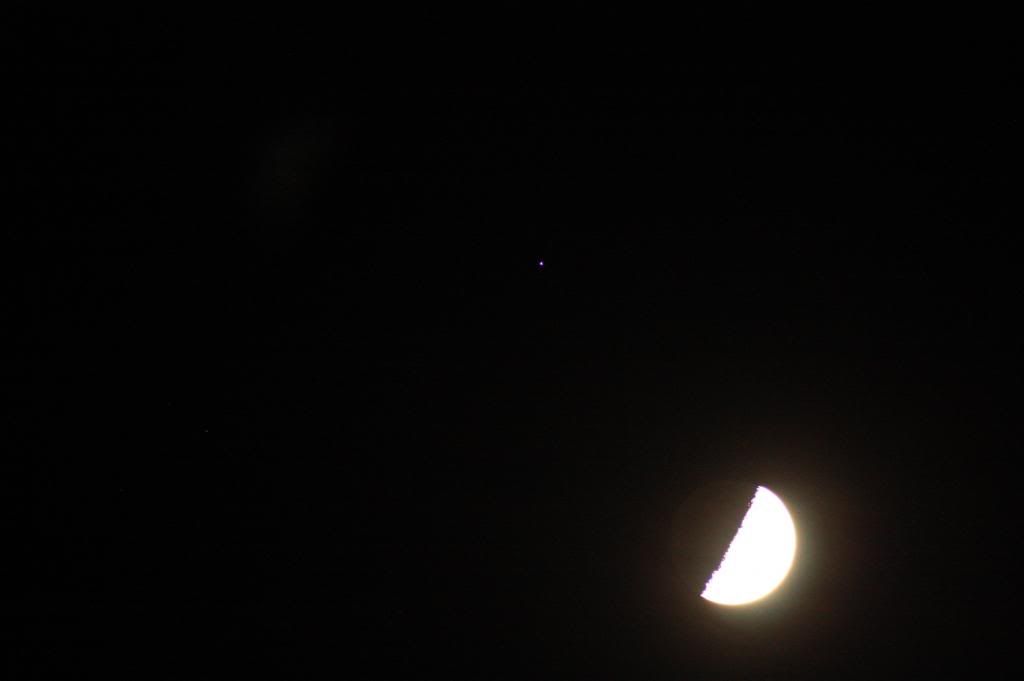Location: Little Lepreau, NB
Date Time: July 15, 2013 2120-2330hrs
Weather: No Wind, mostly clear except for some high level haze, humid, 18 degrees Celsius. Lots of mosquitos.
Equipment: Meade LX200 8 inch telescope with 2 inch 32mm eyepiece. CT3000 Planetary Imager, Canon Rebel DSLR camera with 18-55mm and 75-300mm lenses, laptop.
Objective: To try out 'new to me' planetary imager for first time.
Report: Venus was observed low in the NW just after sundown. It was behind some trees, so it took some moving around to finnally see it. Venus was too far north of the Moon-Spica-Saturn conjunction and hidden by trees to get a good image of it with the conjunction.
Viewing the Quarter Moon through the telescope and 32 mm eyepiece, many craters and features could be clearly seen. The scope was then manually pointed at Saturn. Two of Saturns moons were observed and the degree of seperation of the rings were very impressive. Goto was not used on this night.
The Big Dipper was observed high in the NNW just over the peak of the house, from the front yard, and an image was taken. Leo, was observed almost due south and imaged. Cassiopea was observed in the NE but not imaged.
The Quarter Moon-Spica-Saturn conjunction was the highlight of the night. Many images were taken. The new to me CT3000 Planetary Imager was used for the first time. After much tinkering to get it to work with the laptop(on a previous occassion) the imager worked excellent. It hooked up easily and was simple to work with, providing many excellent images. CCD cameras are very expensive, so this relatively inexpensive planetary imager is a very good alternative for astro imagers on a budget, in my opinion.
No shooting stars or satelights were observed on this evening. Probably one of the warmest nights of the year for observing.











No comments:
Post a Comment